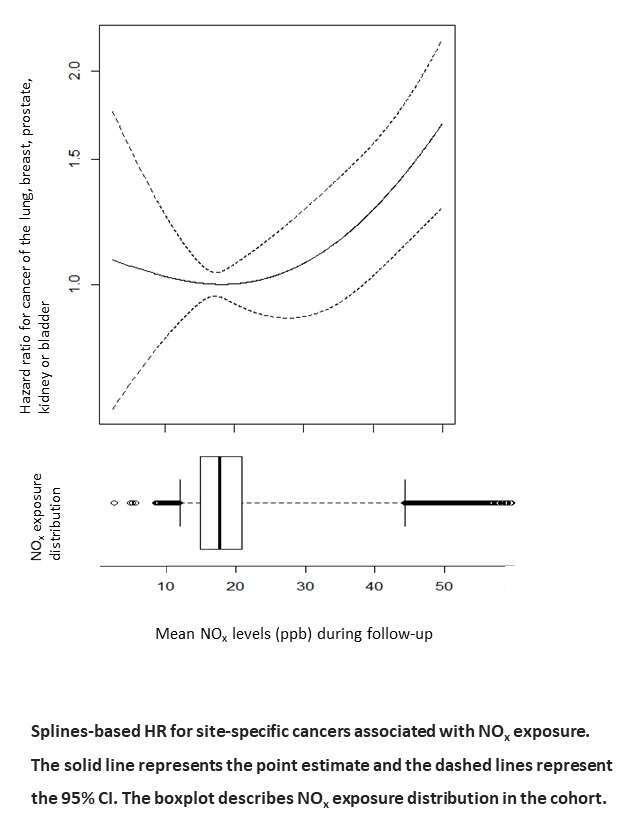
Chronic Exposure to Traffic-Related Air Pollution and Cancer Incidence among 10,000 Israeli Patients Undergoing Percutaneous Coronary Interventions: A Follow-Up Study
Background: Exposure to traffic-related air pollution (TRAP) is considered to have a carcinogenic effect. The authors previously reported an association between TRAP and risk of cancer in a relatively small cohort of first myocardial infarction survivors. This study assessed whether TRAP exposure is associated with subsequent cancer in a large cohort of coronary patients.
Methods: Consecutive patients undergoing percutaneous coronary interventions (PCI) between 2004 and 2014 at Rabin Medical Center in central Israel were followed for cancer incidence through the Israeli National Cancer Registry until 2015. Information regarding cancer risk factors at the index PCI were extracted from the patients’ electronic medical records. Residential levels of nitrogen oxides (NOx) –a proxy for TRAP– were estimated based on a high-resolution national land use regression model. Cox proportional hazards models were constructed to study relationships with cancer.
Results: Among 12,784 candidate patients, 9,816 had available exposure data and no history of cancer (mean age, 68 years; 77% men). Mean (range) NOx exposure was 19.5 (2.3-79.7) ppb. NOx exposure was only minimally associated with age, smoking, and other baseline clinical characteristics. During a median (25th-75th percentiles) follow-up of 7.0 (3.9-9.3) years, 773 incident cases of cancer (8%) were diagnosed. In a multivariable-adjusted model, a 10-ppb increase in mean NOx exposure was associated with a hazard ratio [HR] of 1.07 (95% CI 1.00–1.15) for all-site cancer, and 1.16 (95% CI 1.05–1.28) for cancers previously linked to TRAP (lung, breast, prostate, kidney and bladder) (Figure). A stronger association was observed for breast cancer (HR=1.43; 95% CI 1.12–1.83).
Conclusions: This study supports the notion that chronic exposure to TRAP constitutes an environmental risk factor for cancer incidence among coronary patients.


Powered by Eventact EMS